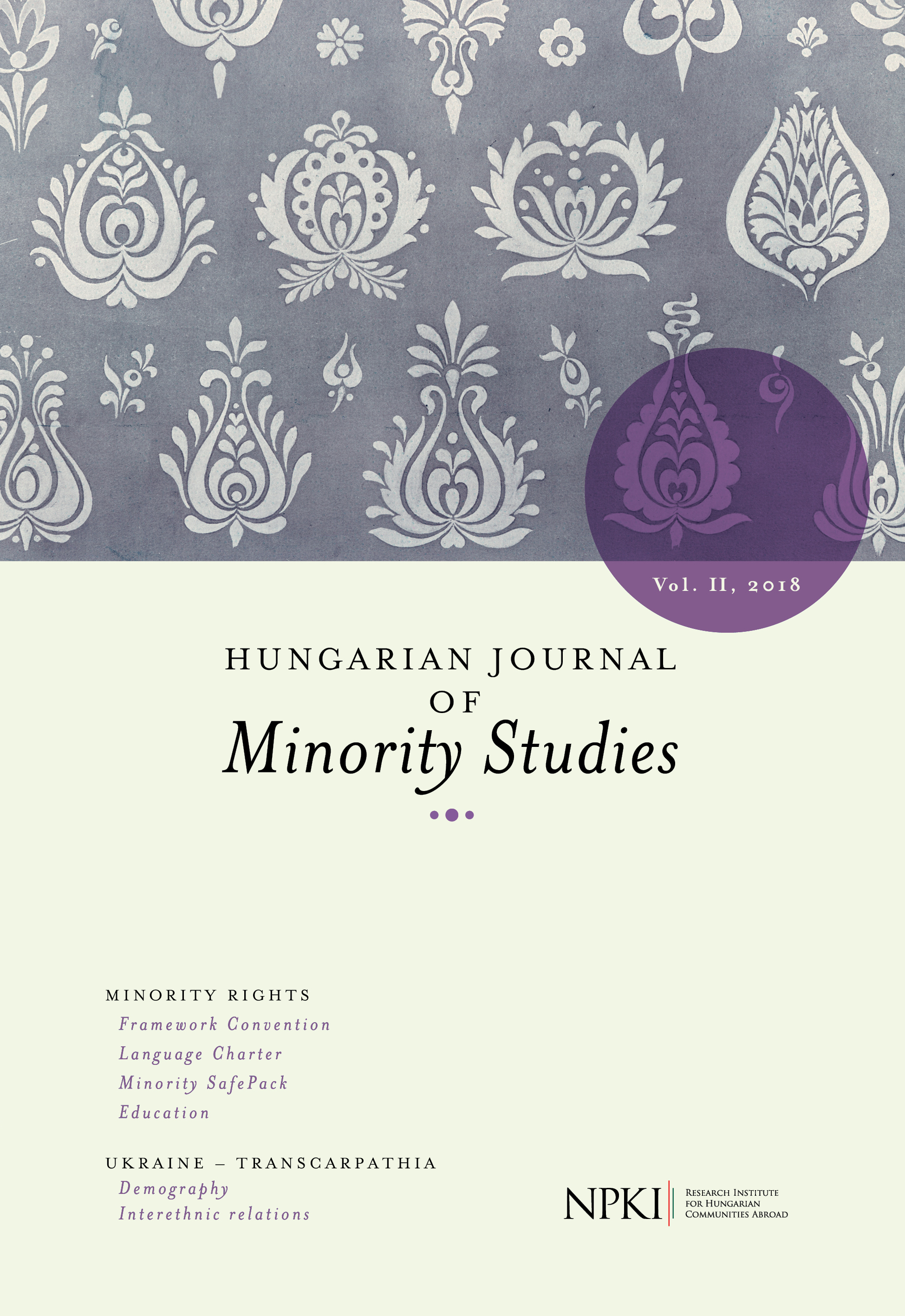Ukrainian–Hungarian Coexistence in Transcarpathia Based on the ‘TANDEM 2016’ Survey
Ukrainian–Hungarian Coexistence in Transcarpathia Based on the ‘TANDEM 2016’ Survey
Author(s): Viktória Ferenc, Krisztián RákócziSubject(s): Politics / Political Sciences, Politics, Social Sciences, Sociology, Inter-Ethnic Relations, Ethnic Minorities Studies
Published by: Nemzetpolitikai Kutatóintézet
Keywords: Transcarpathia;survey;Hungarians;Euromaidan;socio-demographic data;inter-ethnic relations;
Summary/Abstract: In recent years, significant social and economic changes have taken place in Ukraine, and in Transcarpathia too, which have influenced the development of the national-ethnic identity of the locals and the inter-ethnic relations as well. The target group of the TANDEM 2016 sociological survey was the Ukrainian majority and the Hungarian minority within the multinational population of Transcarpathia (covering 92.6% of its total population). The survey investigated questions related to ethnic coexistence, such as the idenitification patterns of the region’s population, attachment to Ukrainian and Hungarian citizenship, language knowledge, ethnic space perception, discrimination, and the evaluation of Hungary’s policy towards Transcarpathia. At the national level, the Euromaidan movement1 and the prolonged war situation in Eastern Ukraine have resulted in a severe economic downturn. The consequences of the decline have been experienced by the inhabitants of the Transcarpathian County of Western Ukraine too. This has directly resulted in the intensification of emigration. The inhabitants emigrate, on the one hand, to not be involved in the war, i.e. to escape drafting. On the other hand, the unprecedentedly hopeless economic situation and the inability of securing a living also appear among the push factors. Meanwhile, the law on simplified naturalization adopted by Hungary in 2010—taken into account the worsening local conditions—opened up new perspectives for the Transcarpathians, and many of the local Hungarians obtained Hungarian citizenship. The practical implications of citizenship (e.g., obtaining an EU passport) are at least as important in this process as is the symbolic value of the recognition of Hungarians by enabling them to obtain Hungarian citizenship. In this difficult period, several other support programs have been launched by the kin-state specifically to help the Transcarpathian Hungarians. These programs have reinforced the positive attitude of Transcarpathian Hungarians towards Hungary, and as a result, the level of commitment to Hungarian culture, as well as the prestige of Hungarian institutions and Hungarian language has changed compared to the previous years. The target group of the TANDEM 2016 sociological survey was the Ukrainian majority and the Hungarian minority within the multinational population of Transcarpathia (covering 92.6% of its total population).4 The paper-based questionnaire survey was conducted in May−August 2016 on the basis of a representative sample in 74 Transcarpathian settlements. The survey was bilingual: a total of 1212 adult informants were interviewed, 398 of them in Hungarian, and 814 in Ukrainian. The survey was aimed at the economically active age group (18–64 years) of the Ukrainian and Hungarian population in Transcarpathia. The telling name (TANDEM ) expresses that in the research we were particularly interested in the characteristics of the Ukrainian−Hungarian coexistence. The two sub-samples were determined by the language of the questionnaire, and since both the Hungarian and the Ukrainian questionnaires contained similar topics, the TANDEM 2016 is unique among the sociological researches conducted in Transcarpathia as the results are comparable in the Ukrainian−Hungarian context. The questionnaire contained a total of 90 questions, covering eight major topics. In addition to (1) the general socio-demographic data, we asked questions about (2) the identity, (3) the inter-ethnic relations, (4) the language use, (5) the religious attachment and other values of the informants, (6) the evaluation of Hungary’s support policy towards Transcarpathia, (7) the social well-being and political participation of the Transcarpathians, and (8) the migration intentions of the informants. In this paper, we focus on the questions concerning identity and language use, as well as on the image of the two nations of the other and the inter-ethnic relations. In addition, our goal is to compare our results with the data of a comprehensive sociological study previously conducted on the Transcarpathian Hungarian population, the 2007 Carpathian Panel research,6 and thus to examine the changes of the last 10 years.
Journal: Hungarian Journal of Minority Studies
- Issue Year: 2/2018
- Issue No: 1
- Page Range: 137-161
- Page Count: 25
- Language: English

